A new vaccine technology using patches instead of needles is being described as “groundbreaking,” a “game changer” and having the potential to “transform immunisation coverage in lower-income countries.”
Backed by global players including the World Health Organization (WHO) Gavi, the Vaccine Alliance and the Bill & Melinda Gates Foundation, among others, vaccine-containing microarray patches (VMAP) — also known as “micro-array patches” or “microneedle patches,” have been the subject of dozens of scientific papers in recent years.
The claimed benefits of such “vaccine patches” — for everything from measles and rubella (MR) vaccines to various mRNA vaccines — are being widely promoted even though few clinical trials have been completed and no such vaccine has yet been approved by regulators.
Scientific and medical experts privy on the subject have raised multiple questions about the technology and warned of potential dangers.
Barbara Loe Fisher, co-founder and president of the National Vaccine Information Center and co-author of the 1985 book “DPT: A Shot in the Dark,” said:
“Whether it is delivered by a needle or a patch, a VMAP is a biological product that atypically manipulates the immune system to provoke strong inflammatory responses that can lead to injury or death for some who receive it.
“If you look at the medical literature describing microneedle vaccine patches, what you see is a lot of hype about how much easier it will be for the vaccinators to slap a patch on a child’s skin instead of using a needle, and how the ‘painless’ patch can reduce vaccine hesitancy.”
Fisher said vaccine hesitancy “has never been about how the product is delivered.” Instead, “it has always been about the lack of evidence demonstrating safety.”
Brian Hooker, Ph.D., P.E., senior director of science and research for Children’s Health Defense, said that the term “vaccine patch” may also be misleading, as it might be confused with nicotine patches for smokers.
Hooker said:
“The term ‘vaccine patch’ is misleading in that this microarray technology is nothing like other patch-based delivery systems for nicotine or hormones. This ‘patch’ still breaks the skin in order to deliver the liquid vaccine that is contained in the microarray’s matrix.
“As such, I don’t quite understand how this injection system will be delivered to patients and parents to administer the vaccine directly. That seems quite risky.
“Unfortunately, repackaging the same vaccines in this different platform does nothing to improve their safety — as this seems more a ploy to convince consumers otherwise.”
VMAP backers seek to ‘turn vaccines into vaccinations’
VMAPs can “overcome many obstacles and bottlenecks faced by intradermal vaccine delivery, thus maximising the reach of vaccines to the most remote locations to turn vaccines into vaccination,” according to an article published last week by Gavi.
According to UNICEF, “VMAPs can increase vaccine coverage by increasing acceptability by caregivers and recipients, and administering vaccines more rapidly and easily with minimally trained health care workers” and can “substantially improve the productivity and resilience of governments to expand immunization coverage.”
UNICEF’s position mirrors that of the WHO, the Gates Foundation and the Clinton Health Access Initiative — “The Big Catch-up” — described as “the largest childhood immunization effort ever,” intent on reversing “declines in childhood vaccination recorded in over 100 countries since the pandemic.”
UNICEF said it is “focusing on driving the research, development and scale of VMAPs,” including “identifying barriers for scaling and investigating the need for market pull incentives to spark interest and endorsement by vaccine manufacturers.”
Nevertheless, no VMAPs have yet been approved by regulators, according to Gavi, which states that, at present, “one measles and rubella vaccine patch has completed Phase 1/2 clinical trials. Two additional phase 1/2 clinical trials are planned.”
“Some COVID-19 and flu vaccines are also entering Phase 1/2 trials, and other vaccines such as HPV are undergoing preclinical assessment,” Gavi added.
According to Gavi, data from Phases 1 and 2 of the first-ever clinical trial of VMAPs in children was shared in May during the Microneedles 2023 conference in Seattle and delivered “promising results.”
The trial, conducted in Gambia with 45 adults, 120 toddlers 15-18 months of age, and 120 infants 9-10 months of age, “evaluated the safety, immunogenicity, and acceptability” of an MR vaccine delivered by micro-array technology developed by Atlanta-based Micron Biomedical.
The vaccine itself was developed by the Serum Institute of India, the world’s largest vaccine manufacturer by number of doses produced and sold. The Serum Institute produces the COVISHIELD COVID-19 vaccine, as well as over half of the world’s vaccines administered to babies.
The Serum Institute, along with Bill Gates, are named as defendants in a pair of lawsuits filed by family members of deceased vaccine injury victims in India.
Envisioning a future where ‘vaccine patches could be mailed directly to peoples’ homes’
The lack of any successfully completed clinical trials has not stopped the proponents of VMAPs from claiming this technology will deliver a broad range of benefits.
According to Gavi, VMAPs are “needle-free and pre-dosed,” simplifying the administration of vaccines, which can then “be carried out by minimally trained volunteers.”
Gavi also claims VMAPs “are safer as they overcome the risks related to operational errors” during administration, such as dosage errors and needle-stick injuries.
VMAPs are “easier to distribute,” according to Gavi, due to their light weight and “enhanced thermostability” which addresses “the problem of vaccine storage requirements” and removes “the need for cold-chains.”
Moreover, Gavi claims “The lower level of pain experienced during administration with MAPs would help reduce vaccine hesitancy and increase vaccine acceptability.”
“There are difficulties in reaching the last mile with the current injectable vaccines since they depend on a functional cold-chain and administration by well-trained staff … Furthermore, most vaccines are administered via injection that may cause pain, and discomfort that leads to hesitancy,” UNICEF states.
Healthcare consulting firm Avalere said VMAPs provide “the potential for lower healthcare costs,” “increased compliance due to convenient and pain free application,” are “ideal for patients with needlestick phobias or difficulty swallowing,” and are “easier for children, older people and patients requiring complex care.”
According to CEPI, VMAPs “could enable a future in which vaccine patches could be mailed directly to peoples’ homes, workplaces and schools, avoiding the delay and inconvenience of traditional needle-and-syringe vaccine scheduling and administration.”
CEPI describes itself as “an innovative global partnership between public, private, philanthropic, and civil society organisations launched in Davos in 2017 to develop vaccines to stop future epidemics.”
VMAPs proposed for wide range of vaccines, including mRNA injections
Proponents of VMAP say the purported benefits of this technology can ultimately translate to acting as an “advantageous delivery route for existing vaccines,” including influenza, tetanus toxoid, MR, hepatitis B and “biologics and small molecules.”
According to the WHO, a VMAP for the MR vaccine may be “potentially favourable,” with “perceived operational advantages that could ultimately increase equitable coverage and facilitate vaccine administration in inaccessible areas.”
For the same vaccine, a Jan. 16 article in the Frontiers in Public Health journal states that as vaccination coverage for measles and rubella “has stagnated,” VMAPs “are anticipated to offer significant programmatic advantages to needle and syringe” options and lead to increased vaccination coverage, with “significant demand expected for MR-MAPs between 2030 and 2040.”
And on Jan. 17, CEPI launched preclinical testing for a “high-density microarray patch … to assess its stability, safety and immunogenicity and to evaluate its potential as a rapid-response technology for heat-stable, dried-formulation mRNA vaccines.”
According to CEPI, this initiative was borne out of its January 2022 call for proposals, as part of its “wider strategic goal of harnessing innovative technologies to improve the speed, scale and access of vaccine development and manufacturing in response to epidemic and pandemic threats.”
Gates, World Bank, World Economic Forum connected to VMAP proponents
While Gavi states that “There is a need for investments to fund pilot-scale manufacturing facilities” for VMAPs, Gavi and other entities that are actively promoting this technology are themselves backed by or connected to some of the world’s most prominent investors, as well as major global organizations.
Gavi says it “helps vaccinate almost half the world’s children against deadly and debilitating infectious diseases.” It was established in 1999, with the Gates Foundation as one of its co-founders and one of its four permanent board members.
Gavi maintains a core partnership with UNICEF, the World Bank and the WHO, which includes Gavi in its list of “relevant stakeholders,” while the Rockefeller Foundation also is a partner and board member — and donor — to Gavi.
Gates-related connections extend to PATH president and CEO Nikolaj Gilbert, who is a member of Challenge Seattle, described as “an alliance of CEOs from Seattle area’s largest employers including Microsoft, Bill & Melinda Gates Foundation, Starbucks, and Boeing.” He previously served as director for Big Pharma firm Novo Nordisk.
According to PATH’s 2021 annual report, the organization is funded by organizations including the Gates Foundation, the Schwab Charitable Fund and the Vanguard Charitable Endowment, in addition to the United Nations, Gavi, the Centers for Disease Control and Prevention, the World Bank and the WHO.
PATH has also received funding from the Gates Foundation, the Rockefeller Foundation, Google and the World Bank for vaccine projects in countries such as India.
The Gates Foundation is also a co-founder of CEPI, along with the Wellcome Trust and the World Economic Forum (WEF). Indeed, CEPI was founded in Davos, Switzerland — home of the WEF’s annual meeting. Its CEO, Dr. Richard J. Hatchett, was previously acting director of the U.S. Biomedical Advanced Research and Development Authority.
Several CEPI board members are also connected to entities like the Gates Foundation.
For instance, Dr. Anita Zaidi is the president of gender equality, director of vaccine development and surveillance, and director of enteric and diarrheal diseases programs at the Gates Foundation, while non-voting member Gagandeep “Cherry” Kang, M.D., Ph.D., is chair of the foundation’s Joint Working Group.
Νon-voting member Dr. Juan Pablo Uribe is the global director for Health, Nutrition and Population and director of the Global Financing Facility for Women, Children and Adolescents at the World Bank.
Dr. Mike Ryan, also a non-voting member, is the executive director of the WHO’s Health Emergencies Programme who gained global prominence during the COVID-19 pandemic through his participation in WHO briefings.
And non-voting member Dr. L. Rizka Andalucia is the director-general for Pharmaceutical and Medical Devices at Indonesia’s Ministry of Health. In November 2022, Indonesian Minister of Health Budi Gunadi Sadikin, at the G20 meeting in Bali, called for a “digital health certificate acknowledged by the WHO” that would allow the public to “move around.”


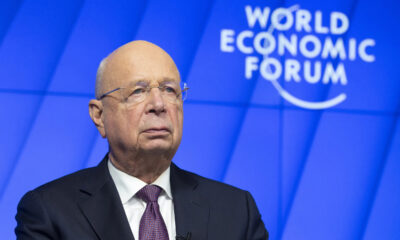

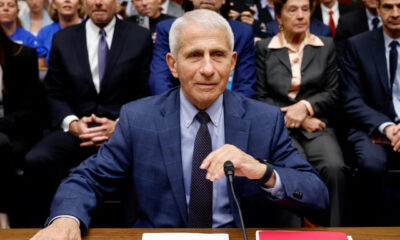

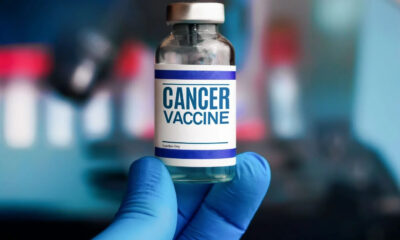



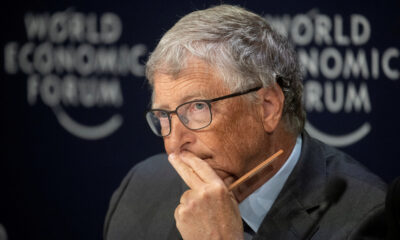












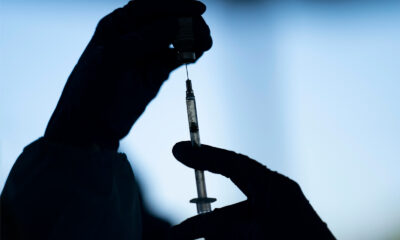




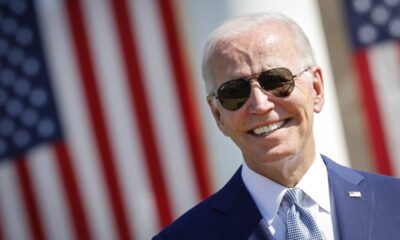

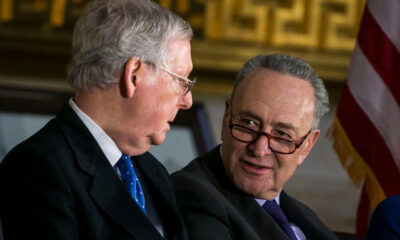





You must be logged in to post a comment Login